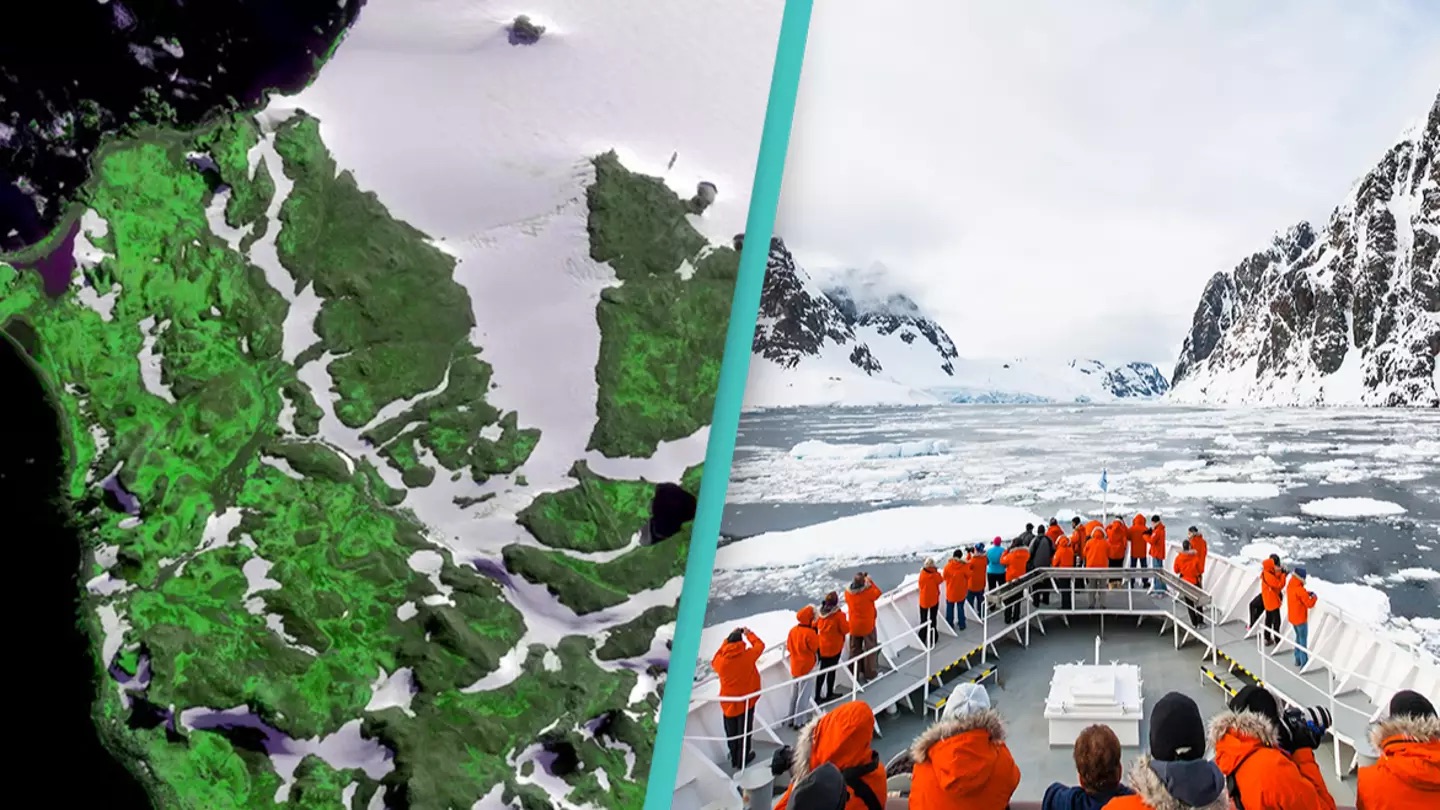When satellite footage revealed Antarctica turning green, scientists were left scrambling for explanations. The Antarctic Peninsula is experiencing such rapid warming that experts have raised alarms about the region’s future. Researchers from the universities of Exeter, Hertfordshire, and the British Antarctic Survey found that Antarctica is warming faster than the global average, leading to a surge in vegetation growth.
Satellite data has identified extreme heat events that have resulted in vegetation expanding over 10 times its size from forty years ago. In 1986, plant life covered less than one square kilometer (0.38 square miles), but by 2021, it had grown to 12 square kilometers (4.6 square miles).

This significant growth, confirmed by satellite imagery, not only reveals more plant life on the peninsula but also an accelerating rate of expansion. The findings, published in Nature Geoscience, come with warnings about the region’s future. Dr. Thomas Roland from the University of Exeter stated: “The sensitivity of the Antarctic Peninsula’s vegetation to climate change is now clear. Under future warming, we could see fundamental changes to the biology and landscape of this iconic and vulnerable region. Our findings raise serious concerns about the environmental future of the Antarctic Peninsula and the continent as a whole.”

Understanding the causes of these changes is crucial to protecting Antarctica. The spread of native plants across larger areas has led to fears of new invasive species, which researchers believe could be introduced by eco-tourists and scientists.
Further studies are urgently needed to determine the climate and environmental factors driving this ‘greening.’ The continued warming could mean even more plant life spreading across the peninsula, with noticeable impacts due to climate change.
Dr. Olly Bartlett from the University of Hertfordshire explained: “As these ecosystems become more established and the climate continues to warm, the extent of greening is likely to increase. While Antarctic soil is typically poor or non-existent, more plant life will add organic matter, facilitating soil formation and possibly allowing other plants to grow. This raises concerns about non-native species being introduced, potentially by eco-tourists or scientists.”

Dr. Roland added: “The plants on the Antarctic Peninsula—mostly mosses—survive in some of the harshest conditions on Earth. The landscape remains dominated by snow, ice, and rock, with only a small fraction colonized by plant life. However, that fraction has expanded dramatically, showing that even this isolated wilderness is being affected by human-driven climate change.”
